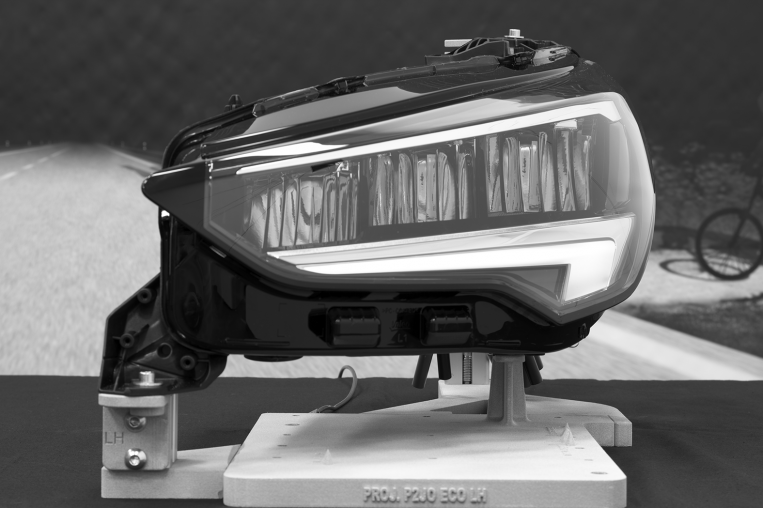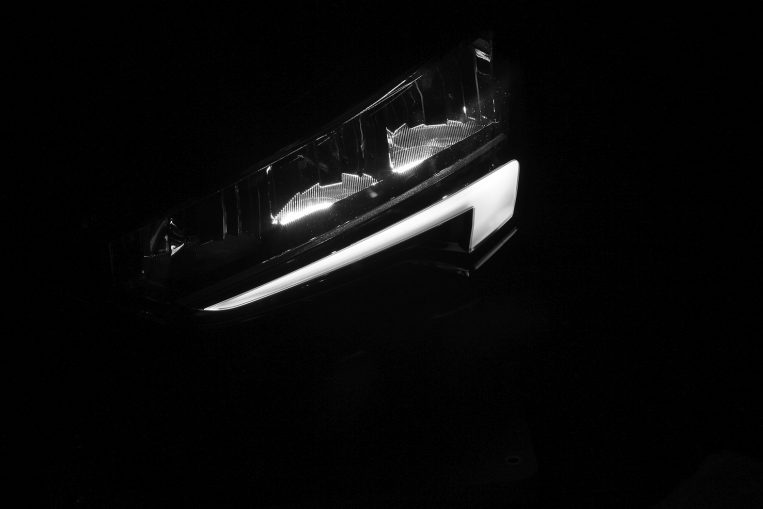*/
]]>

For two years Thomas Feid has been the decisive man for all lighting systems on Opel vehicles.
To overview
At Opel we are known for our innovative lighting technology. The IntelliLux LED Matrix light in Astra, Insignia and now the new Corsa is the best example: glare-free for oncoming traffic, stadium-bright for the driver. And yet this lighting system is even more economical. In the Astra, our IntelliLux LED Matrix light consumes 52 watts. For comparison: Halogen lamps for the low beam swallow around 70 watts per headlight.
Now we’re going to go down and bring in the new Corsa, the extra-efficient, specially designed for frugality LED light, which consumes only 13 watts. This equates to energy savings of 81 percent compared to halogen – without sacrificing light output. On the contrary – even these LED headlights turn night into day.
Six years ago, for the first time in the team of Ingolf Schneider, our head of lighting technology, we started to consider the topic of CO2 savings in light as well. At that time, the majority of vehicles were still using halogen headlights. The required amount of electricity was known to be there – potential was there. Our goal was: We want top light with mini consumption.

Top-light with mini consumption: In the new Corsa, the LED headlights, which are specially designed for economy, consume only 13 watts.
![]()
Savings are not determined on the test bench, but by formula
How can I find out how much CO2 I can save thanks to LED light? This is usually calculated according to a formula. Although a measurement on the test bench would also be possible, it is too costly. The formula includes, among other things, how many watts are actually saved depending on the type of light compared to halogen technology.
The formula also takes into account that you normally only use the dipped beam in the dark. From customer vehicle records, we found that about a third of all trips are at night. This means that only one third of the total driving time can be included in the formula.
To put it simply, we use the wattage we’ve saved in the front of the formula and get out the possible reduction in CO2 emissions at the rear. So we can pretty much predict how much energy we need to save, so that it also translates into emissions.
It can make a difference, which LED is used, with which power. Different beam angles, different light design or other electrical control of the LEDs may provide the crucial milligrams or watts.
A turn signal is rather negligible in its contribution to CO2. Not because of its power consumption, but because of its very short operating time while driving. Individual functions such as dipped or main beam make a higher contribution. And not to forget – the license plate lighting.

1.3 grams of carbon dioxide can be saved in the basic version of the Corsa thanks to the LED headlights.
![]()
Special designs compensate for the reduced light output
Unfortunately, a reduction in the electrical power of the LEDs is usually accompanied by a reduced light output. Therefore, special headlamp designs and complex simulations are required to compensate for the loss of light again. For example, you have to work on the reflector technique. The reflectors of the headlights should as far as possible capture the complete emitted light of the individual LEDs and project them onto the street. That is why they are usually shaped as a kind of shovel because that is optimal for efficiency.
For each model I have a detailed list. These include low beam, high beam etc., their performance in the vehicle and the saved carbon dioxide emissions. Thus, the Corsa basic version with LED headlights alone in this special area with 1.3 grams CO2 savings per kilometer to book. For the 1.2 Direct Injection Turbo, it is 1.38, for the 1.5 Diesel 1.23 grams per kilometer (fuel consumption according to NEDC1: urban 5.4-3.7 l / 100 km, out-of-town 4.1-2.9 l / 100 km , combined 4.6-3.2 l / 100 km, 105-85 g / km CO2, fuel consumption according to WLTP2: combined 6.4-4.0 l / 100 km, 144-104 g / km CO2).
Our goal is to design the entire vehicle lighting as extra-economical LED systems in the future.
¹ The indicated – provisional – consumption and CO2 emission values were determined in accordance with the prescribed WLTP (Worldwide Harmonized Light Vehicles Test Procedure) measurement method and converted into NEDC values to ensure comparability with other vehicles in accordance with Regulation (EC) No. 715 / 2007, Regulation (EU) No 2017/1153 and Regulation (EU) No 2017/1151. The engine complies with the Euro 6d or Euro 6d TEMP emission standard.
² The preliminary fuel consumption and CO2 emission figures given here have been calculated according to the WLTP (Worldwide Harmonized Light Vehicles Test Procedure) prescribed since September 1, 2018 in accordance with Regulation (EC) No. 715/2007 and Regulation (EU) No 2017/1151 determined. These values are given in addition to the official fuel consumption and CO2 emission values (according to NEDC) mentioned above and are not to be confused with these. Because of the more realistic test conditions, fuel consumption and CO2 emissions measured by the WLTP are in many cases higher than those measured by the NEDC.
Further information on official fuel consumption, official specific CO2 emissions and electricity consumption of new passenger cars can be found in the “Guide to Fuel Economy, CO2 Emissions and Electricity Consumption of New Passenger Cars” available at all points of sale and at theDAT Deutsche Automobil Treuhand GmbH, Helmuth-Hirth-Straße 1, D-73760 Ostfildern is available free of charge.
August 2019
Recorded by Bernadette Winter, Photos: Opel, Martina Sabais

